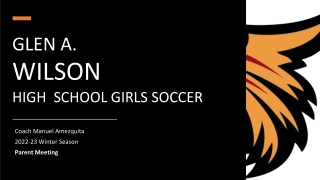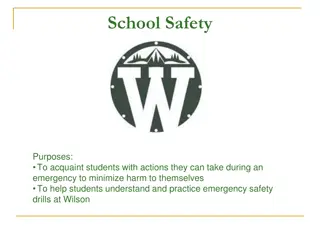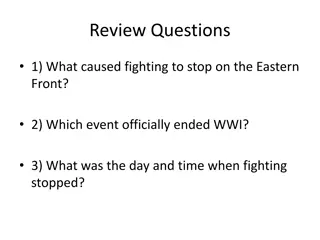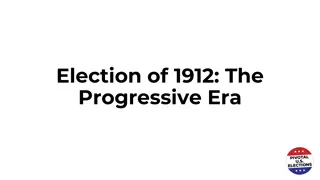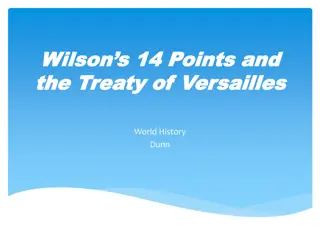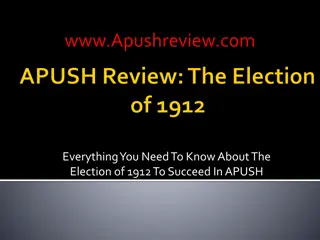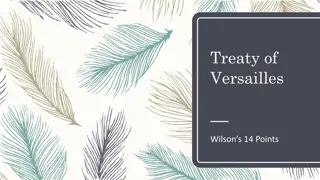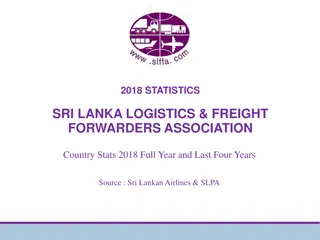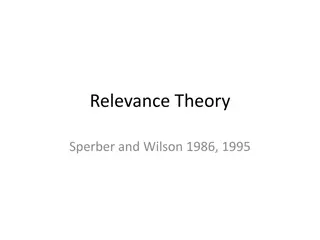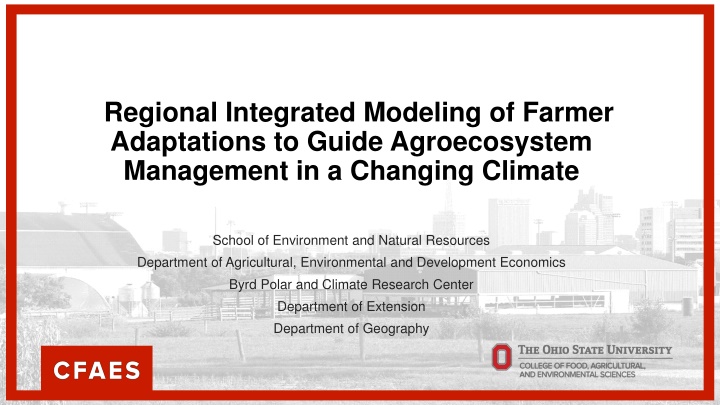
Farmer Adaptations for Agroecosystem Management in Changing Climate
Explore how farmers are adapting to climate-induced risks and uncertainties, impacting the sustainability of agroecosystems. Discover the trade-offs and unknown effects associated with individual and societal level adaptations, aiming to balance agricultural production with critical ecosystem services.
Download Presentation

Please find below an Image/Link to download the presentation.
The content on the website is provided AS IS for your information and personal use only. It may not be sold, licensed, or shared on other websites without obtaining consent from the author. If you encounter any issues during the download, it is possible that the publisher has removed the file from their server.
You are allowed to download the files provided on this website for personal or commercial use, subject to the condition that they are used lawfully. All files are the property of their respective owners.
The content on the website is provided AS IS for your information and personal use only. It may not be sold, licensed, or shared on other websites without obtaining consent from the author.
E N D
Presentation Transcript
Regional Integrated Modeling of Farmer Adaptations to Guide Agroecosystem Management in a Changing Climate School of Environment and Natural Resources Department of Agricultural, Environmental and Development Economics Byrd Polar and Climate Research Center Department of Extension Department of Geography
Photo credit: Blanchard Demo Farms Introductions Research Team Dr. Robyn Wilson project director Dr. Elena Irwin land use modeling Dr. Aaron Wilson climate modeling Stakeholder Advisory Team Kirk Merritt Ohio Soybean Council Dr. Larry Antosch Ohio Farm Bureau Dr. Dennis Todey USDA Midwest Climate Hub Dr. Carl Zulauf OSU Emeritus Ag Policy Steve Emery Nutrien Ag Solutions Mark Apelt Becks Hybrid John Stark The Nature Conservancy Nate Andre Andre Farms Tadd Nicholson Ohio Corn & Wheat Growers Jeff Goetz The Andersons Rod Mobley Ag Credit Gail Hesse National Wildlife Federation Photo credit: Midwest Cover Crops Council Dr. Kaiguang Zhao services modeling Dr. Yongyang Cai economic modeling Greg LaBarge - extension Dr. Bryan Mark State Climatologist Dr. Alan Randall economic modeling Jason Cervenec educ & outreach Dr. Kristi Lekies (evaluator) Post-docs/GRAs: Emily Sambuco, Mary Doidge, Maggie Beetstra Photo credit: Seneca County Conservation District
Photo credit: Blanchard Demo Farms Background and Rationale Climate change in the eastern Corn Belt is projected to bring: Higher temperatures More variable and extreme levels of precipitation Longer growing seasons Photo credit: Midwest Cover Crops Council This will induce agricultural land use and management adaptations These changes will depend on both the values and goals of the individual farmer as well as the conditions imposed by society at-large Adaptations at both the individual and the societal level will generate multiple trade-offs, the effects of which are largely unknown Photo credit: Seneca County Conservation District
Photo credit: Blanchard Demo Farms Our Research Questions How are farmers likely to adapt to these climate-induced risks and uncertainties? Photo credit: Midwest Cover Crops Council How will these changes in land use and management influence the sustainability and resilience of the agroecosystem? What policies and programs best balance agricultural production with protection of critical ecosystem services? Photo credit: Seneca County Conservation District
Photo credit: Blanchard Demo Farms Our Study Goals To increase the capacity of decision makers in the ECBR to identify adaptive strategies that mitigate the risks posed by Photo credit: Midwest Cover Crops Council climate extremes. To demonstrate a holistic integrated approach for assessing these policies at a regional scale that can be applied to other agroecosystems. Photo credit: Seneca County Conservation District
Photo credit: Blanchard Demo Farms Our Study Area: 40%+ land in crops Photo credit: Midwest Cover Crops Council Photo credit: Seneca County Conservation District
Photo credit: Blanchard Demo Farms Photo credit: Midwest Cover Crops Council Photo credit: Seneca County Conservation District
Photo credit: Blanchard Demo Farms Obj 1: Engage Stakeholders (You!) Goals: Use participatory processes to improve the usefulness of our models and legitimacy of the policy analysis Photo credit: Midwest Cover Crops Council Approach: Work with key stakeholder groups to guide our selections for scenario and policy analysis Outcome: More accurate and familiar modeling framework and set of policy recommendations that are more likely to be applied Photo credit: Seneca County Conservation District
Photo credit: Blanchard Demo Farms Obj 1: Engage Stakeholders (You!) What have you agreed to? Helping build the scenarios we present to farmers (identifying how the larger human system is likely to respond to climate change, what climate-induced changes are most relevant, etc.), helping identify the policy scenarios to assess with the integrated model Quarterly conference calls, with one of those replaced annually by a one-day, in-person facilitated workshop (winter) Participating in an evaluation process to assess the impact of the engagement process (more on that soon!) Photo credit: Midwest Cover Crops Council Is our advisory team make-up appropriate? Who is missing? Photo credit: Seneca County Conservation District
Photo credit: Blanchard Demo Farms Obj 2: Develop future climate projections Goal: To understand the impact of climate variability on ag systems across the ECBR Photo credit: Midwest Cover Crops Council Approach: Assess and analyze high-resolution climate data, specifically projections of future precipitation and temperature variability for this region, and critically evaluate the particular stresses that might impact ag systems Outcome: A clearly defined set of scenarios of future climate variability scaled to the ECBR Photo credit: Seneca County Conservation District
Photo credit: Blanchard Demo Farms Obj 3: Identify farmer adaptations Goal: To model farmer land use/management adaptations to climate variability and broader human system changes Photo credit: Midwest Cover Crops Council Approach: Specify the relevant set of farmer adaptations under future scenarios using a combo of qualitative, historical and experimental data. Outcome: A model of the likely adaptations of diverse farmers to climate uncertainty under varying market, policy and technological conditions Photo credit: Seneca County Conservation District
Photo credit: Blanchard Demo Farms Obj 4: Develop regional economic model Goal: To develop a model that accounts for price feedbacks in simulating land use and management adaptations Photo credit: Midwest Cover Crops Council Approach: Develop the model without explicit uncertainty and simulate it for a baseline climate scenario, then parameterize it to account for uncertainty and heterogeneous farmer behavior Outcome: A fully specified model of the regional economy that accounts for spatial heterogeneity and uncertainty, and generates predictions in the allocation of land to different uses and management for future climate scenarios. Photo credit: Seneca County Conservation District
Photo credit: Blanchard Demo Farms Obj 5: Model change in ecosystem services Goal: Determine the extent to which climate variability and changes in farmer land use/mgmt will impact ecosystem Photo credit: Midwest Cover Crops Council services Approach: Quantify these impacts using spatially explicit models of farmer land use/mgmt decisions and process-based agroecosystem models Outcome: An improved understanding of the realistic impacts of climate change on crop production, carbon sequestration, water quality and biophysical climate regulation. Photo credit: Seneca County Conservation District
Photo credit: Blanchard Demo Farms Obj 6: Identify optimal policies Goal: Find the socially optimal agriculture, energy and conservation policies and programs Photo credit: Midwest Cover Crops Council Approach: Create a principal-agent model in which the government decides on an ensemble of policies, while farmers and firms choose their optimal decisions (land use transitions, crops, investments) Outcome: A novel framework that embeds behavioral heterogeneity, land and labor markets, and projected changes in agroecological oucomes into a model that determines the optimal policy ensemble for a given future climate scenario and specified level of uncertainty Photo credit: Seneca County Conservation District
Photo credit: Blanchard Demo Farms Obj 7: Engage farmers & stakeholders Goal: Make climate variability and climate change adaptation strategies relevant for a diverse set of stakeholders Photo credit: Midwest Cover Crops Council Approach: In-person and online dissemination of products related to four key outputs: climate trajectories, farmer profiles, agroecosystem impacts and optimal policies Outcome: Enhanced stakeholder capacity to conduct climate science programming, engage farm clientele, and lobby for more informed policy making Photo credit: Seneca County Conservation District
Photo credit: Blanchard Demo Farms Project Outcomes (at the end of 3 yrs!) Innovations in the science and art of integrated systems modeling Photo credit: Midwest Cover Crops Council Increased understanding of the implications of climate variability on the agroecosystem Increased ability to identify the policies and programs needed to increase sustainability and resilience Increased stakeholder confidence in his/her ability to adapt to climate-induced risks Photo credit: Seneca County Conservation District
Photo credit: Blanchard Demo Farms Discussion What keeps you up at night from a weather perspective? What are the climate trends that farmers are already adapting Photo credit: Midwest Cover Crops Council to, and in what ways are they adapting? Have these impacts already led to economic impacts? What are the likely future adaptations that farmers may make as the climate becomes warmer, wetter and more variable? What policies or programs would help encourage sustainable and resilient adaptation? Photo credit: Seneca County Conservation District

